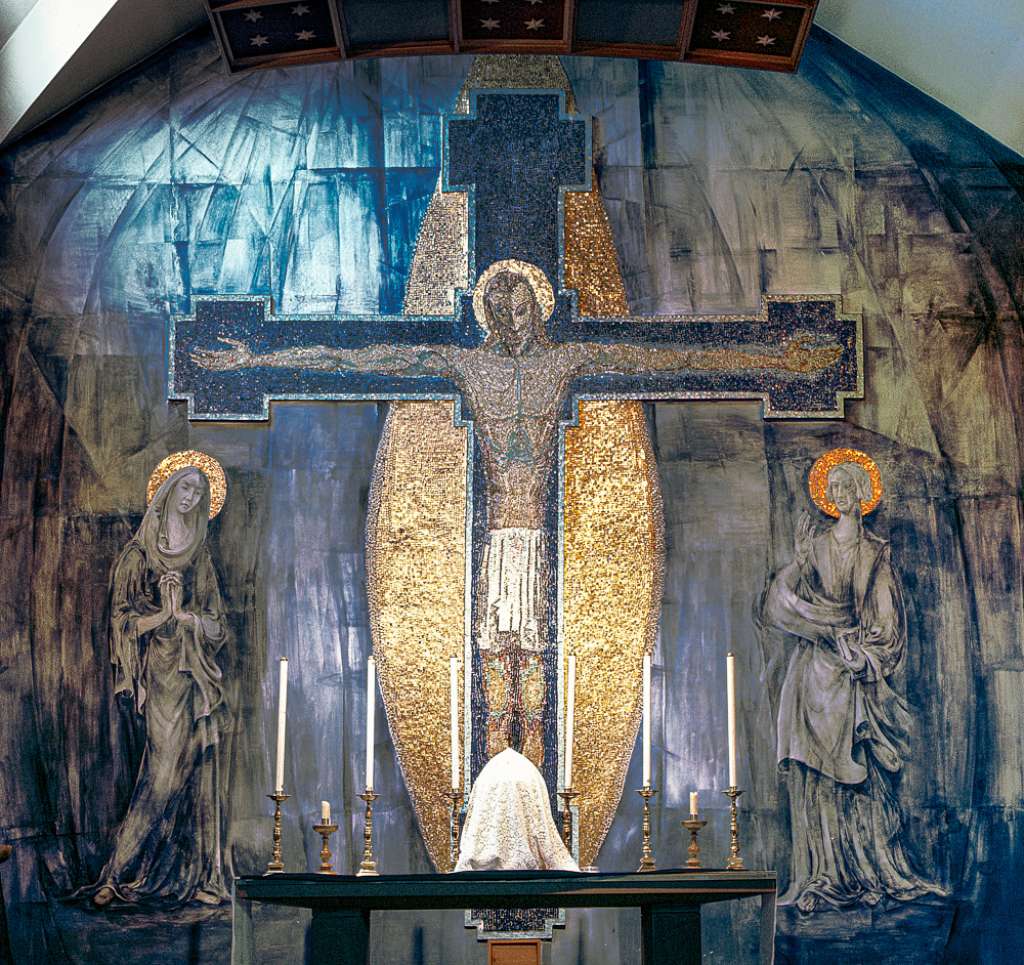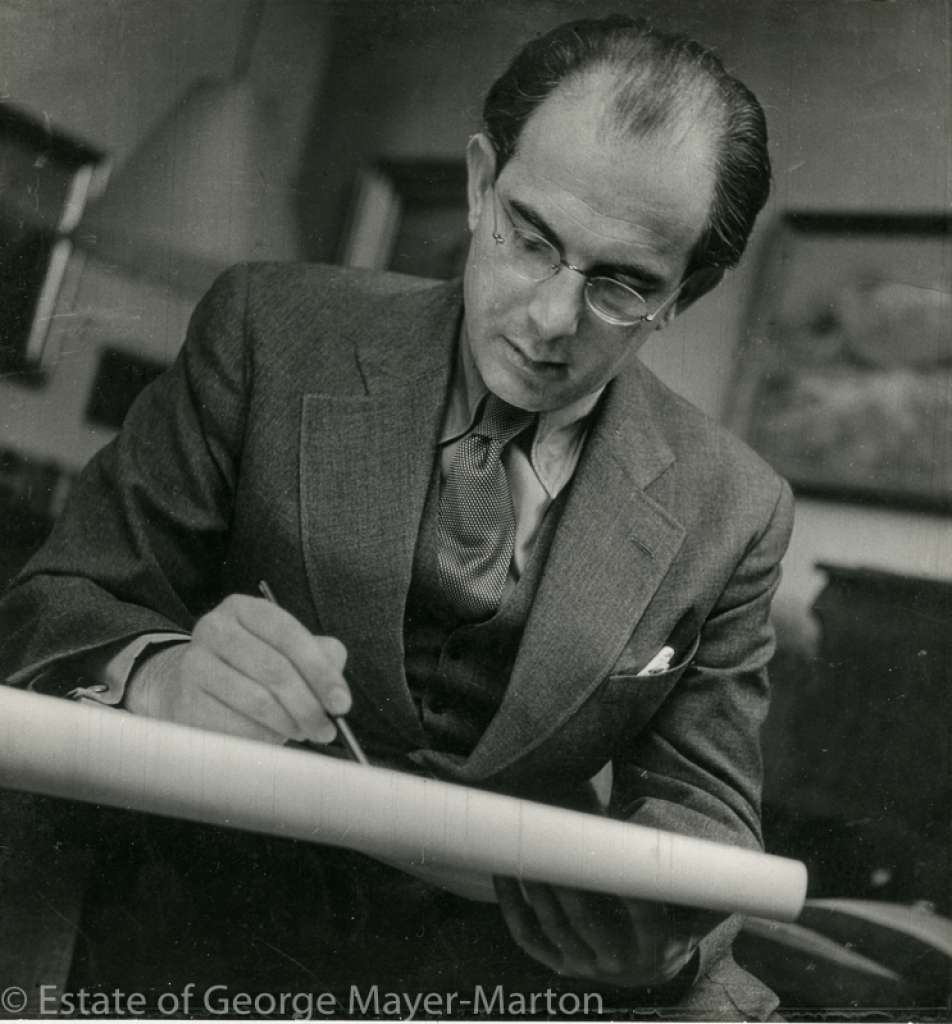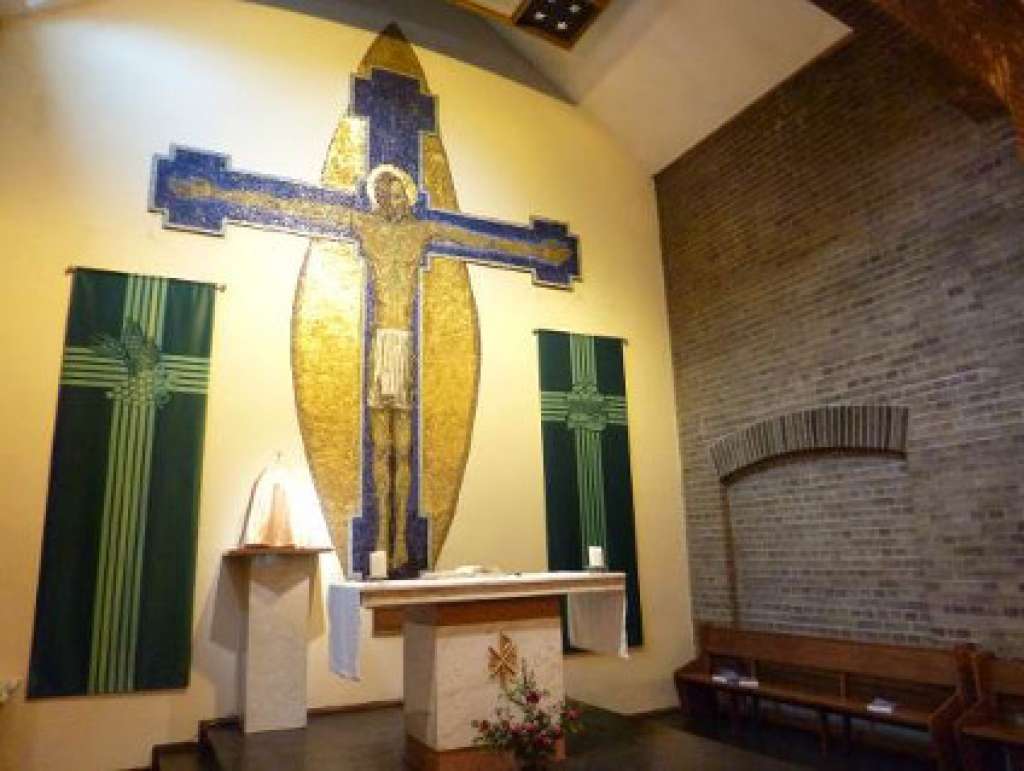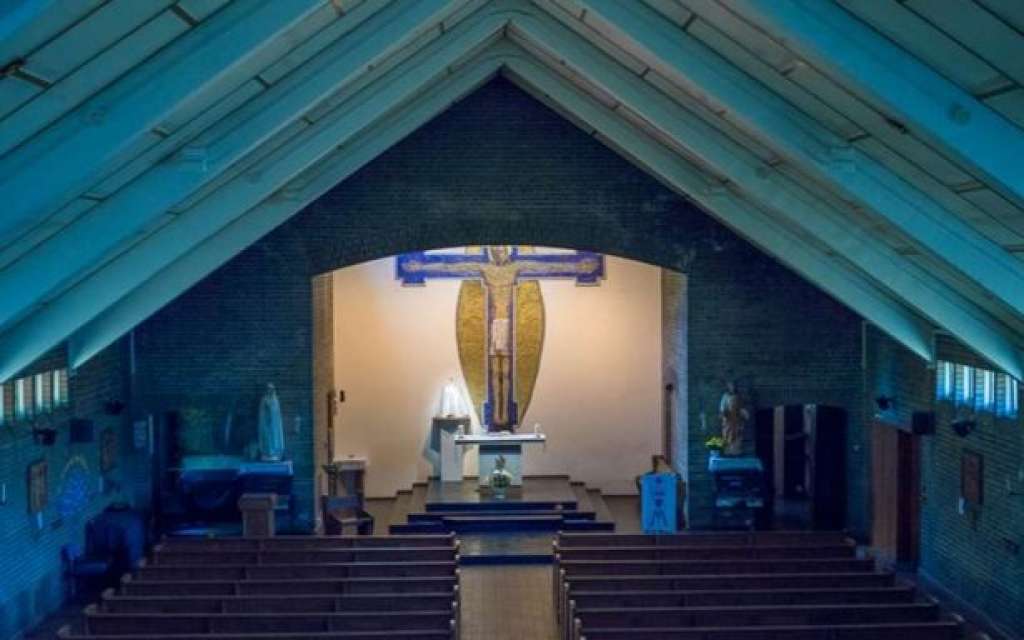PRESS RELEASE: National Gallery and European counterparts support urgent calls to save Oldham Mural
20th December 2021
The Director of the National Gallery in London, Gabriele Finaldi, is backing the campaign to save the Oldham Mural. In a statement to SAVE Britain’s Heritage, Gabriele Finaldi states that the modern mural in the Holy Rosary Church in Oldham is, “a particularly meritorious example that brings together neo-Byzantine mosaic with a modernist Cubism-inspired aesthetic in the now covered-up surrounding frescoes.”
Finaldi describes the piece as having, “real aesthetic verve and considerable artistic invention and interest within the tradition of liturgical art. It seems entirely obvious to me that it should be preserved, preferably in situ, and ideally, serving its original purpose.”
The 1955 mural by Hungarian artist George Mayer Marton - made up from mosaic and painted fresco - is at risk from vandalism and deterioration. It sits within the closed Church of the Holy Rosary in Oldham, under the care of the Catholic church. SAVE and many national heritage and arts organisations remain concerned about its future.
The 7.5m long mural depicts the figure of Christ in golds and tans against a dark blue cross and gold mandorla. It was commissioned following the Festival of Britain when public art came to be seen as a symbol of civic renewal and social progress.
One of only two ecclesiastical murals by Mayer-Marton that survive in situ, this is the only one that incorporates both fresco and mosaic.
The listing application, submitted in August 2020 by Nick Braithwaite, the artist’s great-nephew, and supported by SAVE is still being considered by Historic England. These latest endorsements follow statements of support last year from Tristram Hunt, director of the V & A who described the mural as a “dazzling beauty”, as well as backing from the Victoria Gallery, Liverpool, the Imperial War Museum London, and the Glynn Vivian Gallery in Swansea.
In November 2021, we received further statements from the Hungarian National Gallery and the Belvedere Gallery in Vienna.
László Baán, General Director of the Museum of Fine Arts, Hungarian National Gallery has written a statement stating: “Among Mayer-Marton’s mosaics and other wall paintings are the Crucifixion of the Holy Rosary Church in Oldham with its extraordinary technique – the combination of a Byzantine-like mosaic and a fresco – with a high art historical value. … we believe this composition gives its audience an unforgettable memory of religious emotions. It is our responsibility to preserve and transmit artistic treasures for the next generations, as in the case of this mural too.”
Harald Krejci, Chief Curator of the Belvedere, Vienna has also written in support. He states: “The muralist Georg Mayer-Marton is one of the most important personalities on the Viennese art scene in the first half of the 20th century. As a full member and later Vice President of the Hagenbund, he set important accents within the Viennese art landscape. In particular, his public commissions in England after his escape from Austria in 1938 are extremely important evidence of the cultural transfer between Hungary, Austria and England. Mayer-Marton's testimonies are not only essential for the classification and understanding of post-war art, but also important from a socio-historical perspective. … This mural of Mayer-Marton shows at its best the cultural heritage of Viennese Art of the Klimt era and the Secession and their reflections on byzantine art and mosaic. Combined with the heritage of Viennese kinetic art and his knowledge of British Vorticism this mural is unique and outstanding and therefore needs to be preserved.”
Henrietta Billings, director of SAVE Britain’s Heritage, says: “It’s fantastic and significant that so many leading authorities on public art from the UK and Europe are publicly backing the campaign. The mural remains vulnerable and the listing application is urgent. We urge Historic England to take notice and protect this unique piece through listing. We believe the church – which is generous in size and well built – should be reused rather than demolished, with the restored mural a focal point for the community.”
Marcus Binney, executive president of SAVE Britain’s Heritage, says: “When the overpainting is removed this will be a rediscovery as exciting as a medieval church fresco revealed beneath overpainting at the Reformation.”
Background
The mosaic crucifixion was originally surrounded by wall paintings depicting the figures of Mary and John the Apostle against a background of various shades of blue. Historical photographs show that the wall painting extended over the entire wall, but in the 1980s the fresco element was painted over.
New evidence has concluded that the fresco remains intact under the paint and that it is possible to restore the mural to its original condition.
The significance of the mural has also been highlighted by a number of national experts including Europa Nostra, Twentieth Century Society, the Ceramic and Architectural Tiles Association as well as several leading academics and architectural historians.
Mayer-Marton (born Hungary 1897, died Liverpool 1960) was a leading figure in the Viennese art world in the 1920s and 1930s. He and his wife escaped to Britain in 1938, where he began working as a lecturer for CEMA, the predecessor of the Arts Council. In 1952 he was appointed as a lecturer at the Liverpool College of Art. There he established the Department of Mural Art. The course in this technique which he instigated at the College was the first of its kind in the UK.
During his time at the college Mayer-Marton completed more than 200 oil paintings and he was commissioned by the Roman Catholic Church to carry out works at a number of churches in Lancashire and Cheshire, completing numerous frescoes and mosaics, one of which, the Pentecost, now resides in the Metropolitan Church of Christ the King in Liverpool.
The Byzantine mosaic method Mayer-Marton employed is believed to be its first use in this country. This mural is one of only two ecclesiastical murals by Mayer-Marton that survive in situ and the only one that incorporates both fresco and mosaic.
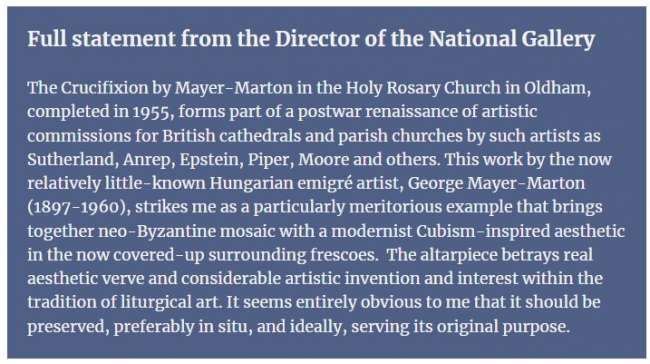
ENDS
Note to editors
1. For more information and images contact Henrietta Billings, director of SAVE Britain's Heritage: office@savebritainsheritage.org/ 07388 181 181.
2. See here for our previous press release on the mural.
3. SAVE Britain’s Heritage has been campaigning for historic buildings since its formation in 1975 by a group of architectural historians, writers, journalists and planners. It is a strong, independent voice in conservation, free to respond rapidly to emergencies and to speak out loud for the historic built environment.

